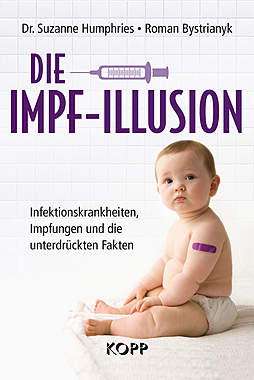- Hinweis auf die bevorstehenden Probleme im commercial real estate Markt (mT) - DT, 15.11.2007, 03:43
Hinweis auf die bevorstehenden Probleme im commercial real estate Markt (mT)
-->Marktvolumen: ca 800 Mrd USD. Ebenso Exzesse durch massive Überkapazitäten und bevorstehende Rezession. Meiner Meinung eher ein"sanft" einsetzender, jedoch zusätzlicher Effekt, da in diesem Sektor nicht so ein scharfer"ARM Reset Schedule" existiert und die Firmen generell mehr Geld haben als die hispanic illegal immigrants, die sie auf 110% LTV ein McMansion mit 0% down payment geleistet haben.
GruĂź DT
The Next Shoe to Drop:
Commercial Real Estate and Its Massive Forthcoming Losses
While everyone’s attention is concentrated on subprime and other residential mortgages, the next shoe to drop - in the mortgage and credit crunch saga - will be commercial real estate (CRE); indeed investors’ worries and panic are now shifting towards CRE and its related securitized products (CMBS and CMBX).
Many of the same excesses that were observed in subprime - poor underwriting standards, loose and excessive lending to marginal projects - are also observed in CRE. For example, as reported by Fitch, since 2005 there has been a very sharp increase in interest rate only mortgages and mortgages with high loan to value ratios. Loans increased to 118 per cent of the value of commercial properties in the last quarter, as reported by Moody’s, suggesting widespread use of reckless negative ammortization mortgages. And while real investment in commercial real estate has been strong in recent months (growing at a SAAR rate above 10% while residential was collapsing at a negative 20% rate) there is now evidence that commercial real estate is also at a tipping point. Actually the bubble in CRE construction - like the bubble in residential construction - will soon turn into a painful bust.
The reasons for this coming bust are clear. Commercial real estate - or more generally non-residential investment in structures - includes two main elements: office buildings, shopping centers/malls; and construction of structures for the manufacturing sectors (i.e. new factories). Both components are now under stress. The reason why we will observe a sharp slowdown in construction of new offices and shopping centers is that, with a lag, commercial real estate follows residential real estate. Indeed, as the SF president Janet Yellen put it last year there are plenty of new residential ghost towns in the West in places like Nevada, California, Arizona, etc. So why would anyone want to build new shopping strips/malls, hotels and offices in such ghost towns. If the towns are empty the stores and malls and offices will be empty too? Thus, as suggested by formal research - such as that by McGraw Hill Construction - with a leg of a few quarters non-residential construction follows residential construction. Thus, you can expect in the next two quarters commercial real estate to follow the slump of housing and its rate of growth to fall from double digits close to zero.
The other main component of non-residential investment in structures is manufacturing structures (i.e. new factories). But with manufacturing slumping and real investment in equipment and software slumping too (capex spending by the corporate sector) the demand for new manufacturing structures is slumping too. If you don’t invest in new machinery you do not need new structures where such machinery produces goods. And capex spending is under severe pressure given the credit crunch, the uncertainty about the economy, the widening of credit spreads for corporate firms (junk bond yield are now up 300bps higher than before the summer crunch and heading above 500bps over US Treasuries) and the slowdown in the economy.
Once this slowdown in CRE investment does occur of three components of fixed investment (residential, non-residential structures, and software and equipment) could experience negative growth.
And indeed the boom in CRE investment - with excessive construction of commercial real estate is leading - like in the case of housing - to a glut of unsold or empty properties that is leading to a fall in prices. As reported by the FT: “Moody’s index of commercial real estate prices is expected to show that prices flattened or fell in September, after rising nearly 14 per cent in the 12 months to August. RBS Greenwich Capital predicts that US commercial property prices will fall 10-15 per cent next year.”
The coming meltdown of commercial real estate is also evident by the sharp widening in credit spreads for CRE mortgages and commercial mortgage backed securities (CMBS). One of the most clear signals of this extreme stressed in the non residential MBS (CMBS) market is given by the CMBX index that is reported by Markit. The data are scary: for BB tranches the spread is now over 1500bps; for BBB- the spread is 1,100; for BBB is 965; even for A is 540; and 326 for AA tranches. All these spreads have sharply widened compared to their spring 2007 levels. At these spreads the ability to finance any new CRE investment - apart from those already committed and financed - is practically null. After the pipeline of already financed projects is finished the market for financing and securitizing CRE - apart from the highest rates projects - is practically frozen. Indeed, the issuance of CMBS fell to $6.3 billion in October, down 84% from a record $38.5 billion in March that finance about half of commercial property purchases. So the CRE market now behaves similarly to the sub-prime market; it is totally frozen.
Indeed delinquency rates on CRE projects - while still modest - are sharply rising. According to the WSJ the current default rate is 7.88% for CMBS issued in the last 10 years and is set to significantly rise. And now lending standards are being tightened as the risks of CRE are emerging and the credit crunch in this market is escalating: the typical loan to value ratio is now down to 70% from 80% and higher loan margins are imposed on investors.
And since the total value of the stock of securitised commercial property loans was $804bn (at the end of the first quarter of 2007) the coming bust of CRE will lead to another round of massive losses for the banks who made these loans and the investors who bought these toxic mortgages. So expect another saga of collapsing construction, falling prices, rising default and deliquencies and massive losses for the mortgages and mortgage backed securities related to CRE. If CRE prices will fall - as expected by some - by at least 15%, the losses from CRE investments could easily be above $100 billion, possibly as high as $150 billion. Add those CRE related losses to the losses in the $300 to $500 billion range now estimated by RBS and Deutsche Bank for subprime and other residential mortgages. The financial markets massacre is just starting and a generalized liquidity and credit crunch will become full blown in the next few months.
gesamter Thread:
 Mix-Ansicht
Mix-Ansicht

